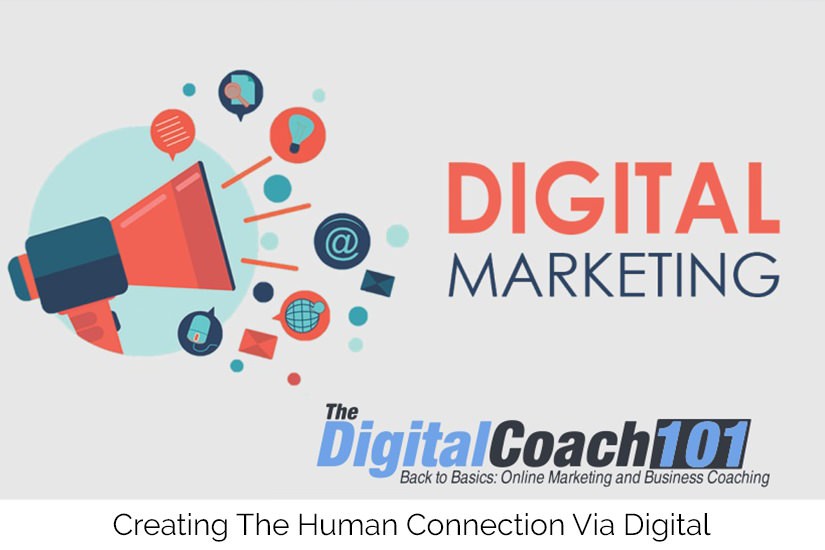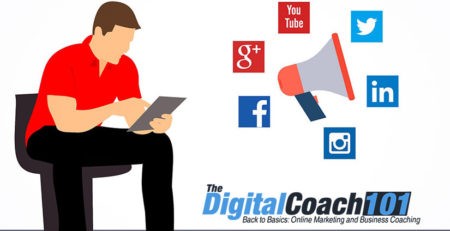Let’s Not Beat Around The Bush: Meet The Big 5 Of Digital Marketing
Digital Marketing is like traditional marketing on steroids.
It’s faster, more versatile and significantly more affordable than offline marketing methods. Think about the cost of sending an email or writing a Facebook post compared to producing and airing a TV ad, for example. They’re not even in the same ballpark.
Digital Marketing is also one hundred percent measurable and trackable, so you can monitor results in real time and quickly gauge the success – or not – of your campaign, and adjust tactics accordingly.
Digital media, unlike our friends the newspaper and even, to some degree, the magazine, are not going anywhere. They are not only here to stay but are on an aggressive campaign to actively take over the world. Okay, so not really. But there is no denying that digital marketing is capturing more and more of businesses’ marketing spend – and if that isn’t the case with your business, you seriously need to be asking yourself why.
Digital Marketing is a multi-limbed beast that pervades every aspect of our online world, and you can spend hours and hours reading articles and blogs on the subject. But because we know you don’t have that kind of time, we’ve taken the five most critical components and unpacked them a little, giving you a deeper insight into why they’re so important, and, as such, why you should be focusing attention on them when working on your own digital marketing strategy.
Content
Content is king. You’ve probably heard that a lot already, but for good reason. Because it’s true. Content is the lifeblood of digital marketing. It’s what courses through the veins of every online media out there – blogs, websites, eNewsletters, videos, social media and more.
Useful, relevant and informative content cuts through the clutter of digital noise with which we get bombarded on a daily basis. Good content puts you directly in front of consumers in a way that nothing else can. It’s not even about selling, it’s about reinforcing your brand message and demonstrating why your particular product or service is better, brighter, happier and shinier than your competitor. It’s about creating warm and fuzzy associations, so that the next time a consumer is in the market for whatever it is you do, your brand is already in their head, shouting, “Pick me! Pick me!” Good content is like a mind tattoo – very hard to get rid of!
Good content also helps establish your brand as a market leader and close the trust gap that often exists between brands (particularly new ones) and consumers. It stops your business from looking too self-promotional, and reassures customers that you’re not interested in badgering them with hard sell techniques, but want to instead establish your brand as a credible source of industry relevant information.
User Experience
Experiences, like life, happen. And consumers – who are basically just people with needs – have experiences that are frequently outside of the channels we might have chosen to market our product on. This is because people don’t have channels, and they don’t like it when businesses attempt to address their needs in terms of what the business wants to do, instead of what they, the customer, actually want.
This is why customers fall through the gaps in our carefully thought out marketing plans, and guess what? These gaps are where conversions live.
Today’s consumers are spoilt for choice when it comes to pretty much everything. If you can’t give them what they want, when they want and how they want it, they will have no qualms in moving on to your competitor who can. The experience they have with your brand online is critical to the eventual outcome of their interaction – and, in some cases, to the continued survival of your business itself.
Whether customers are looking to book a flight online, find information or buy a product or service, they expect their experience to be one hundred percent pleasurable and hassle free. They’re not interested in websites that take too long to load, are difficult to navigate, have designs and layouts that are confusing, or that are not instantly responsive to mobile.
User Experience In A Mobile World
Over two-thirds of digital media time is spent on mobile devices, so making sure your site offers a great experience for mobile users is no longer optional. According to this eye-opening report by Google, 74% of people surveyed said they were more likely return to sites that offered a positive mobile experience, while just over two-thirds said they are more likely to buy a product or service from a highly mobile-friendly site.
The same report also cited almost 80% of consumers as saying they searched for another site if the one they visited first didn’t live up to their expectations, while 50% said that even if they liked the business, they would support them less often if their website isn’t mobile friendly.
So, stop worrying about FOMO and start worrying about “phone-MO,” because missing out on mobile marketing opportunities means missing out on sales. True story.
Search Engine Optimisation (SEO)
SEO is the process of getting your online content ranked organically (ie. naturally, and by naturally, we mean free!) on search engine results pages. This isn’t something that just happens, and all sorts of wizardry and magic are involved to make sure your website occupies one of the all important “first five” spots on the first page of the search results.
This is known as ranking, and it is key to the success of any digital marketing strategy. Users trust search engines, so if Google ranks you at the top of its page for a particular search query, then the person doing the search will automatically trust your site and its content.
SEO is a truly vast field that is too big to go into in any real detail here, but if you’d like to know more (and honestly, when you know what it can do for your brand, why wouldn’t you?) you can go here to read some more awesome stuff!
Social Media
Where do we even begin with this one? Social media websites are growing faster than any other kind, and 84% of B2B marketers use social media in one form or another. No matter what product or service you provide, and who your ideal customer is, using social media as a marketing tool will help grow your brand.
Generally speaking, people look at social media sites such as Facebook and Twitter as networking sites, so they tend to see your posts more as information that might be useful instead of as an in-your-face advertisement. But if you do want to take a more hard-sell approach, you can leverage the power and reach of social media with customisable ads that you can target according to consumers’ location, purchase history, education level, age and gender.
Social media also enables you to respond to customer complaints (and compliments!) immediately. This real-time aspect is critical, and numerous studies have shown that customers appreciate companies that respond timeously to comments and take active steps to resolve problems. It’s worth remembering that a happy customer usually tells two people about their experience, but an unhappy one will complain to anyone who will listen (and even some who won’t!)
A really strong presence on social media builds brand loyalty, and brands with active social media profiles have more loyal customers.
Mobile
We touched on the importance of mobiles when we spoke about User Experience, but it really is worth revisiting as it is, hands down, the most important aspect of any digital marketing campaign (yup, saving the best for last!)
To truly appreciate the enormity of the mobile realm, we have no choice but to plunge you into something of a stat storm. We don’t want to numb you with numbers, but there is really is no getting away from the smack-you-in-the-face reality of these figures from Hubspot:
- In 10 of the world’s biggest markets (including America and Japan), more Google searches take place on mobile devices than on computers.
- 49% of B2B researchers use their mobile devices to research products or services while at work.
- 65% of smartphone users agree that when conducting a search on their smartphones, they look for the most relevant information – regardless of the company providing that information.
- 51% of smartphone users have unexpectedly discovered a new company or product when conducting a search on their smartphone.
- 48% of consumers start mobile research with a search engine.
- 26% of consumers start mobile research with a branded app.
- Two-thirds of emails are read on either smartphones or tablets.
- Outside of work, Americans most commonly check their email while watching TV (70%), from bed (52%), on vacation (50%), while on the phone (43%), from the bathroom (42%), and even while driving (18%).
- 75% of Gmail users access their accounts on mobile devices.
- 48% of emails are opened on a smartphone
There’s not too much more to add to that really, except to say that if you haven’t already incorporated mobile into your digital marketing campaign, best chat to the mobile masters at Digital Coach immediately, if not sooner!













